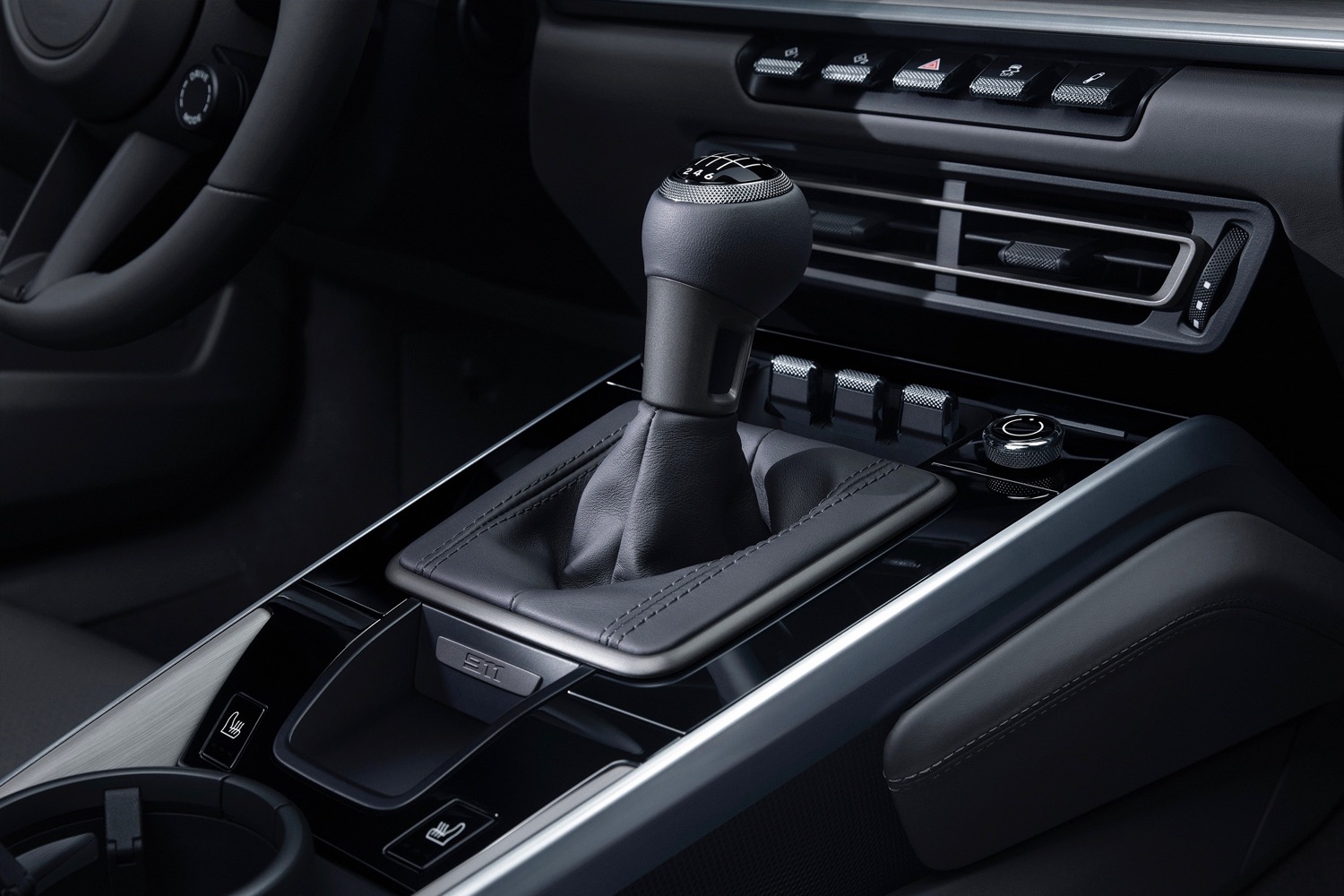
When the current, 992-generation, Porsche 911 launched, it was missing something: A clutch pedal. Porsche promised a manual transmission, but only made a PDK dual-clutch automated gearbox available at launch. The wait will soon be over, as the 2020 Porsche 911 Carrera S and Carrera 4S will get a seven-speed manual. Porsche expects the first manual-equipped cars to reach United States dealerships in spring 2020.
The manual transmission comes with the Sport Chrono Package, which adds a few performance features (and a dashboard clock, hence the name). You get dynamic drivetrain mounts, a rev-matching function, and a switch on the steering wheel that lets you toggle between the four driving modes (Normal, Sport, Sport Plus, and Individual). Manual-transmission cars also get a mechanical limited-slip differential with torque vectoring, in place of the electronically controlled unit used in dual-clutch PDK cars.
The Carrera S and 4S are one step above the base Porsche 911 Carrera (without the “S”). Both versions use a 3.0-liter twin-turbocharged flat-six engine, making 443 horsepower and 390 pound-feet of torque. The Carrera S is rear-wheel drive, while the 4S is all-wheel drive. Coupe and convertible body styles are available, and you’ll be able to get a manual transmission with both.
Porsche did not release full specifications for the manual models, but did say a 911 Carrera S manual would do zero to 60 mph in about 4.0 seconds, and reach a top speed of 190 mph. That’s about half a second slower than the PDK version, with the same top speed.
The manual-transmission 911 models are available to order now, but deliveries won’t take place until Spring 2020. Porsche didn’t release pricing for every iteration, but the 911 Carrera S starts at $114,650, while a 911 Carrera 4S convertible starts at $134,750. That likely represents the spread of prices, before options.
It’s no longer possible to take a manual transmission for granted, even in a sports car like the 911. Sports cars may be all about the experience of driving, but most customers still prefer the convenience of an automatic. Dual-clutch transmissions like Porsche’s PDK can also shift much quicker than manuals. For drivers who care more about having fun than acceleration figures and lap times, though, a manual transmission is still the best option. Porsche isn’t alone in keeping the stick-shift faith: Aston Martin recently brought back the manual transmission option for its Vantage after a short hiatus.


